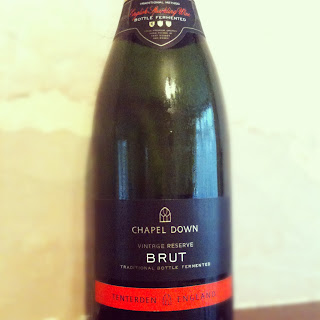The journey a grape will undertake to become a good wine is astounding. The more I learn about different wines, the more I appreciate why the resulting taste relies on the most subtle of changes in the wine making process. Every element from the soil, the vine, picking, transportation, crushing, fermentation, temperature control, preserving, filtration, maturation and bottling is meticulously executed to ensure consistency and control for that particular grape or wine. Each winemaker has their own particular tried and tested method and the smallest modification can impact on the process, changing the taste of the wine (sometimes on purpose, other times not). Now factor in something that is out of anyone's control: the weather and the fickleness of mother nature. A late spring, a wet summer, an early winter, too much water, too little water, a touch of rot, fungus or infestation and a viticulturist's entire crop can be wiped out or severely compromised.
Consider if you will, the grape as a very demanding child. Love, care and attention must be given unconditionally and every need must be catered for and addressed immediately in order to stop any chance of things turning sour. Even when everything has been done and the brat is fed, watered and happily playing, an unexpected oversight or mistake somewhere in the process will result in it being well and truly spoilt. Only when everything comes together perfectly, does the end justify the painstaking journey taken to get there. That is why winemakers have enormous passion for their own produce because in effect, they are selling you their children.
This week's wine is a North Italian red, made from 100% Corvina grapes. Bought from Majestic for £9ish, the appellation is Indicazione Geografica Tipica which is roughly the Italian equivalent of the French Vin de Pays. I chose this bottle to review because the grapes undergo two specific processes which nicely illustrate the point I am making and which are easily detectable within the taste of the wine. After being picked, the grapes are air dried for two months, allowing the grape to lose water content but intensifies the flavour of the fruit. Additionally, the wine is matured in oak barrels for at least a year in order to extract aromatic compounds which contribute to richness and flavour complexity.
First to arrive on the nose was a clear and gentle hit of apple and cherry, accompanied by oak undertones. Concentrating harder, I also detected a very slight hint of tobacco although this hides shyly behind the legs of the aforementioned prominent flavours. Upon tasting, cherry jumps out as the leading flavour but are complimented by other red fruits. It is light and fairly acidic in texture but the discreet tannin and oak provide gravitas and an enjoyable mouth feel. This is a very approachable red which is light and fruity in body but has the right balance of tannin to make it suitable with or without food.
Considering the plethora of mishaps, ailments and contretemps that can
readily occur, it is a wonder that good wine even exists. Fortunately for us, it does and the Ca'del Pipa Corvina is a fine illustration of a good, affordable wine. Go on, get some and spoil yourself.



